In today’s digital world, virtual mailboxes offer a convenient and efficient solution for managing mail and packages. But with the increasing threat of identity theft and data breaches, the question naturally comes up: are virtual mailboxes safe from such risks?
Let’s take some time to explore the ins and outs of virtual mailbox security, potential threats, and best practices for choosing a secure provider and protecting your virtual mailbox.
Short Summary
Use the links here to jump to a specific section of this article:
- Understanding Virtual Addresses
- Evaluating Virtual Mailbox Security
- Potential Risks and Threats
- How to Choose a Safe Virtual Mailbox Provider
- Safeguarding Your Virtual Mailbox
- Frequently Asked Questions
Ok, before we can really answer the question “Is a virtual mailbox safe?”, it’s important to have some context for understanding how they operate in the first place.
Understanding Virtual Mailboxes
Virtual mailboxes are changing the way we handle our physical mail, offering a myriad of benefits for individuals and businesses alike. By providing a real street address and a digital mailbox, virtual mailbox services make it easy to receive, manage, and forward mail and packages from anywhere in the world.
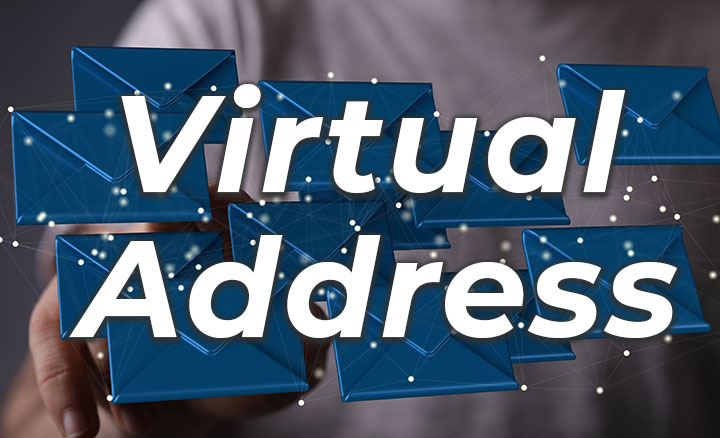
This level of convenience has made virtual mailboxes popular among remote workers, digital nomads, and businesses seeking a professional mailing address.
How virtual mailbox services operate
Virtual mailbox services work by providing customers with a real street address that can be used to receive postal mail and packages. In many cases, a company will contract out to 3rd-party mail centers for these addresses and in other cases they will own and operate the address themselves (something known as a virtual mailbox primary hub).
Note: When it comes to security and privacy, understanding who owns and operates your virtual address location is critical.
When mail arrives at the virtual address, an employee at the mail center scans the envelope or package label and uploads the image to the customer’s digital mailbox. You as the customer can then view your mail online and request that they:
- Open and scan the mail;
- Forward the mail/package to anywhere in the world;
- Dispose or shred the mail;
Virtual mailbox companies offer a variety of features to cater to different needs, such as registered agent services, filtering out junk mail, check depositing and integrations with cloud services.
Who Handles Your Mail at a Virtual Address?
The key feature of a virtual address is the ability to offload your physical mail onto a digital dashboard that makes it easy to sort, organize and store your mail. But key question when you’re dealing with the security of your mail – either personal mail or business – is this:
How is your mail being handled?
- Physically: When virtual addresses receive incoming mail, there is a human on the other end who scans your mail, opens your mail and then forwards or shreds it. These services make it easier to manage your mail remotely, but they also introduce extra links in your privacy and security chain.
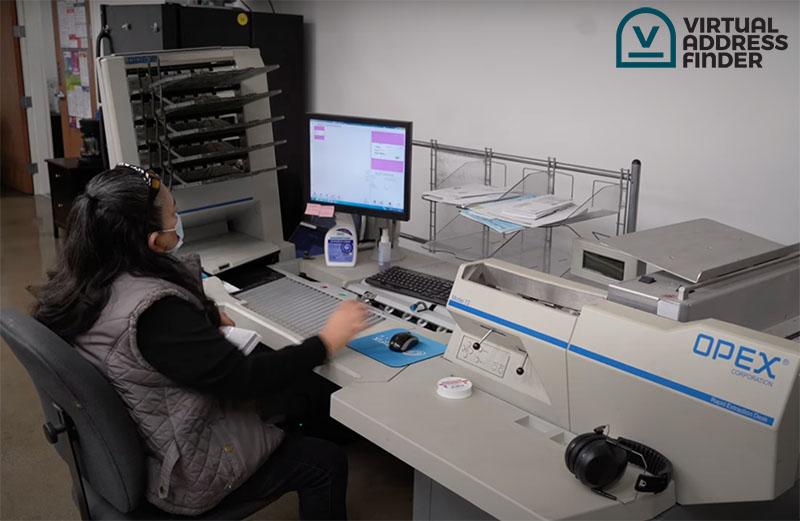
- Digitally: How are your mail scans encrypted in the cloud and delivered to your computer or device over the internet? How easy would it be for a hacker to access these files or decrypt the data?
These are the risks of a virtual mailing address. But there are things you can do about it.
Evaluating Virtual Mailbox Security
When considering a virtual mailbox service, it’s crucial to evaluate their security measures to ensure your mail and personal information are protected.
There are four important questions you need to ask during this evaluation step:
- Who owns & operates this address location?
- What kind of facility is it?
- What kind of employee screening/monitoring is done?
- What digital encryption and authentication do they employ?
A secure virtual mailbox provider should have strong encryption and authentication protocols in place to prevent unauthorized access, as well as secure mail processing facilities and background-checked employees to safeguard your mail.
However, not all virtual address services are forthcoming about their security measures, which makes it really hard to do this kind of research. It’s essential to look beyond the information on their websites and comb through customer reviews to gain insight into their security protocols and practices.
Location ownership & operation
The dirty little secret of the virtual mail industry is this: most company DO NOT own and operate their own addresses. This is contracted out to small mail centers, UPS/FedEx stores and WeWork locations.
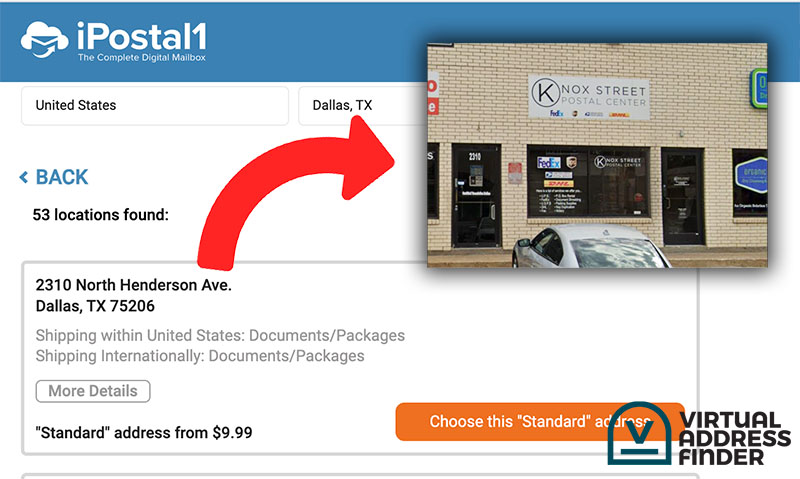
As an example, the Google Street view of this iPostal1 “Standard address” is actually the Knox Street Postal Center (read the full iPostal1 review here).
This isn’t a bad thing, per se, but these postal centers aren’t designed to be the most secure places. This is why it’s worth considering a virtual mailbox primary hub, which is a physical location that is directly owned by the mailbox company you’re using.
In this way, you know that the company controls employee screening and manages facility security. This is the case for all five locations that VirtualPostMail owns and operates, as an example, which is how they can offer such high security.
Secure facilities and employee screening
Who can enter a provider’s facilities? What are their employee screening procedures?
Secure mail processing facilities are essential for keeping your mail and personal information safe. Providers should have video monitoring and restricted access to areas with open mail or mail scanning to prevent unauthorized access or tampering.
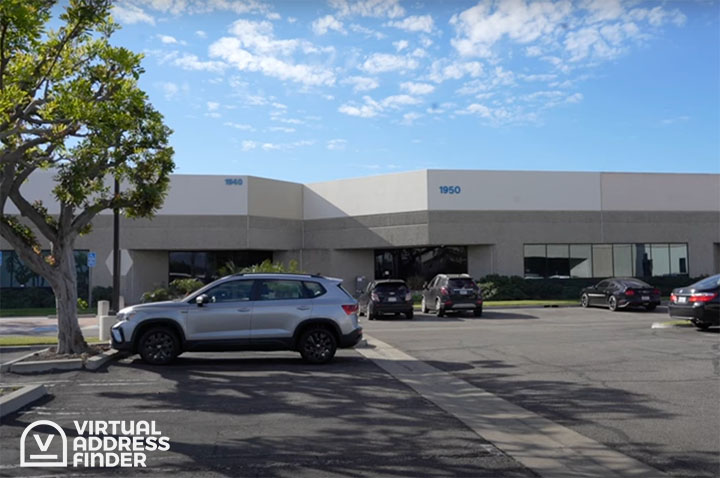
The above is an example from PostScan Mail of an unmarked business part location that is monitored by security cameras and is locked 24/7.
Furthermore, virtual mailbox providers should conduct background checks on their employees to ensure they can be trusted with handling sensitive mail. Adequate training on privacy protocols is also crucial to maintain a secure mail handling environment.
These measures help guarantee the safety of your mail and personal information, protecting you from potential risks like identity theft and data breaches.
Encryption and authentication
Encryption and authentication are critical components of virtual mailbox security.
Encryption is the process of encoding data so that only authorized users can access it, while authentication verifies the identity of a user or device. These measures help ensure that your mail and personal information are safe from unauthorized access and tampering.
A reliable virtual mailbox provider should employ strong encryption and authentication methods to protect user data. For example, Traveling Mailbox not only offers data encryption for all the digital mail, you can also set up 2-factor authentication for secure login.
Potential Risks and Threats
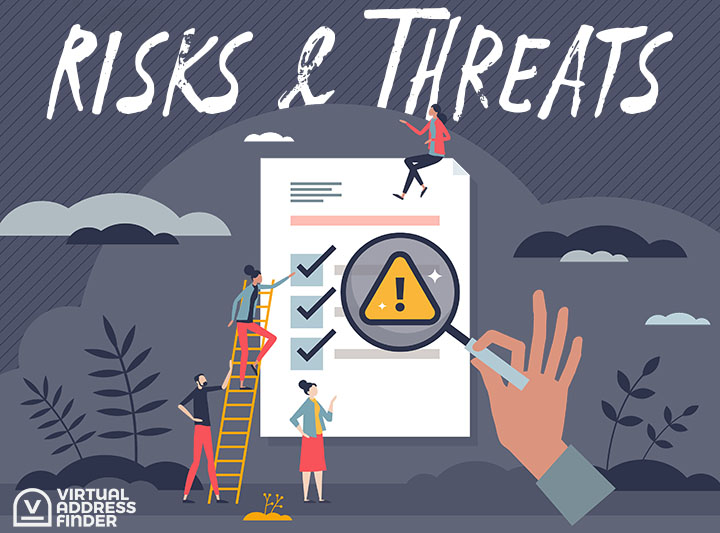
While virtual mailboxes offer numerous benefits and conveniences, it’s essential to be aware of potential risks and threats associated with these services.
Some of the common risks include:
- Identity theft;
- Data breaches;
- Mail intercept;
Understanding these threats can help you make informed decisions when choosing a virtual mailbox provider and implementing safety measures to protect your mail and personal information.
To mitigate these risks, it’s crucial to select a secure virtual mailbox provider that follows best practices for security and privacy. Additionally, monitoring and tracking your mail, updating passwords and security settings, and using two-factor authentication can help safeguard your virtual mailbox and minimize the chances of falling victim to identity theft or other security breaches.
Identity theft
Identity theft is a serious concern for virtual mailbox users. This crime occurs when a person’s personal information is stolen and used for fraudulent purposes, resulting in financial loss and damage to the victim’s credit score.
In the context of virtual mailboxes, identity theft can occur when unauthorized individuals gain access to your mail, either physically or digitally, and extract sensitive information.
To protect your virtual mailbox from identity theft, it’s crucial to choose a provider with a strong reputation for security and privacy. We’ve provided our own recommendations and in-depth virtual mailbox reviews for you to use in your research. These providers implement various security measures, including encryption and authentication, to protect your mail and personal information.
Additionally, monitoring and tracking your mail, updating passwords and security settings, and enabling two-factor authentication can help prevent identity theft.
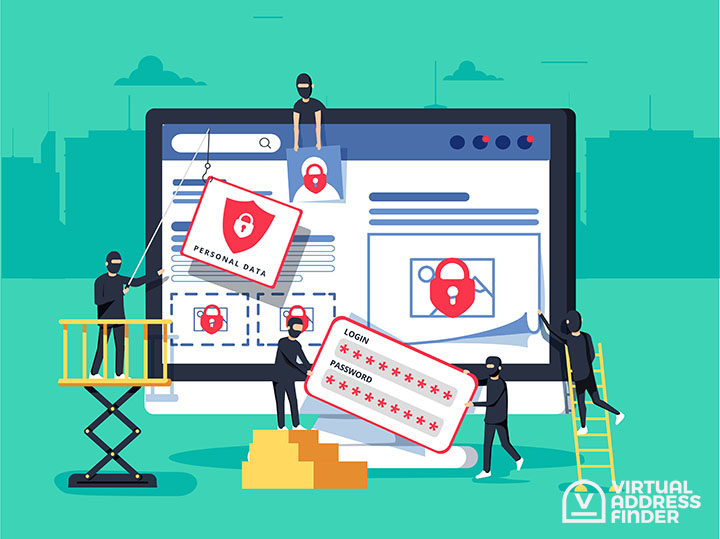
Data breaches
Data breaches pose another threat to virtual mailbox users, although this is true for most any digital account you have nowadays.
A data breach occurs when sensitive, confidential, or protected information is accessed, stolen, or used by someone who isn’t authorized to have it. Data breaches can result in identity theft, financial loss, and damage to one’s reputation.
To protect your virtual mailbox from data breaches, it’s essential to choose a secure provider that employs strong encryption and authentication measures. Additionally, using strong passwords, enabling two-factor authentication, and monitoring your accounts for suspicious activity can help prevent unauthorized access and data breaches.
Mail interception
Mail intercept is another potential risk associated with virtual mailboxes. This occurs when someone accesses mail sent through the postal system without permission. Mail intercept can lead to identity theft, data breaches, and other forms of fraud.
To protect your virtual mailbox from mail intercept, it’s important to limit the number of people who handle your mail. In many cases, this could mean steering away from 3rd-party mail centers and opting for a primary hub address. It also means selecting reputable mail delivery providers and – if necessary – getting mail delivery confirmation.
Choosing a Safe Virtual Mailbox Provider
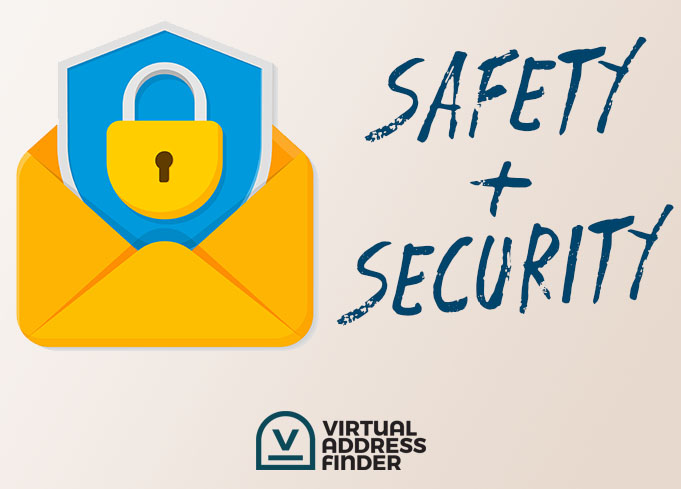
When selecting a virtual mailbox provider, it’s essential to consider their reputation, reviews, and compliance with USPS guidelines. Researching provider websites and customer reviews can help you gain insight into their security measures and overall reliability.
Remember, not all virtual mailbox providers are created equal (despite how similar their websites seem), and choosing a reputable and secure provider is crucial to avoid potential risks and threats like identity theft, data breaches, and mail interception.
In addition to security, you should also look into the features and pricing plans offered by various virtual mailbox providers to find one that best suits your needs. There are plenty of popular providers on the market right now, but the two we would recommend most for security and privacy would be:
- VirtualPostMail (they own and operate each of their five locations)
- PostScan Mail (they also own and operate many – but not all – of their locations)
Reputation and reviews
Reputation and reviews play a significant role in determining the security and reliability of a virtual mailbox provider. A provider with positive reviews and a strong reputation is more likely to have robust security measures in place and offer a dependable service.
To ensure you choose a secure virtual mailbox provider, be sure to research their reputation and reviews online. Look for information on their websites or through customer reviews on platforms like Trustpilot, Sitejabber, and even our unbiased virtual mailbox reviews (we’ve actually visited mailbox locations!). This will help you gain insight into their security protocols, customer service, and overall reliability, enabling you to make an informed decision.
Address Location
I know we continue to beat this drum, but address location makes a HUGE difference in the security and privacy of your virtual mailbox.
Go onto Google Street View to see the address location. Is it in a strip mall or a business park? Does it have security cameras around it?
You might also want to consider what part of town the address is located in.
Safeguarding Your Virtual Mailbox
Safeguarding your virtual mailbox is an essential part of maintaining privacy and security. This is a simple as monitoring your mail dashboard and using two-factor authentication. Even just these two things can protect your mail and personal information from potential risks like identity theft and data breaches.
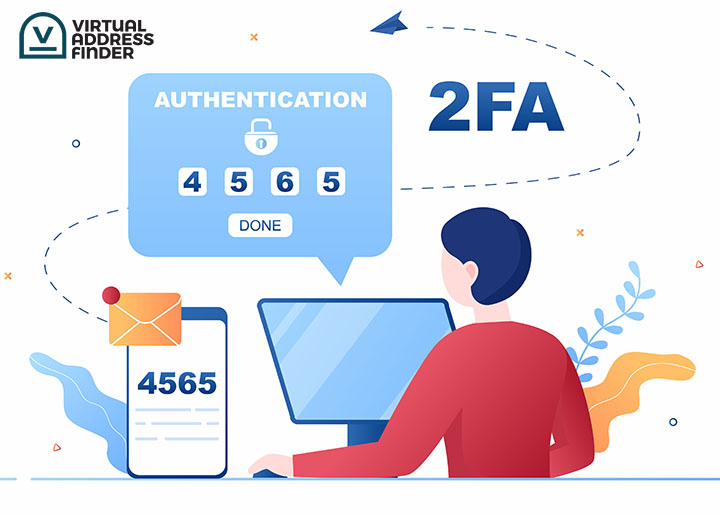
It’s important to remember that it’s your responsibility to take proactive steps in protecting your mailbox. By staying vigilant and following best practices, you can ensure the safety of your virtual mailbox and enjoy the convenience and benefits it provides.
Monitoring and tracking mail
Monitoring and tracking your mail is a crucial aspect of virtual mailbox safeguarding. Keeping an eye on your mail helps you spot any suspicious activity or unauthorized access, preventing identity theft and ensuring important mail isn’t missed or lost.
To effectively monitor and track your mail, be sure to have notifications turned on so you know immediately when a piece of mail has been received. Look at the mail carefully to be sure that nothing looks fishy.
Create strong passwords and security settings
Creating a strong password and updating security settings is another essential component of virtual mailbox safeguarding. A strong password is the first line of defense and can help prevent unauthorized access, ensuring your mail and personal information remain secure.
But to really ensure safety, be sure to enable 2-factor authentication, or 2FA for short. When using 2FA, you’ll be asked for an additional piece of information during the login process, which could be a 6-digit code via SMS text or even a physical key that you insert into your device.
Finally, review your account security settings to make sure that you’ve got the highest level of security enabled.
Summary
In conclusion, virtual mailboxes offer a convenient and efficient solution for managing mail and packages, but it’s crucial to prioritize security and privacy, particularly if you’re a business.
By understanding the potential risks and threats, evaluating virtual mailbox security measures, and implementing best practices for safeguarding your virtual mailbox, you can enjoy the benefits of a virtual mailbox while ensuring your mail and personal information remain protected. So, do your research, choose a reputable and secure provider, and take proactive steps to keep your virtual mailbox safe from potential risks.
Frequently Asked Questions
I routinely receive a lot of questions about virtual mailboxes from people who are doing their own research. Before you send me an email, check out the answers to some of these common questions:
Virtual mailboxes offer a great deal of security, provided they are using proper security protocols such as encryption, two-factor authentication, and destruction of discarded mail. As long as you make sure to research the virtual mailbox provider and choose a reputable one, your data should remain safe and secure.
Overall, virtual mailboxes can be quite secure if they use digital security measures such as encryption, two-factor authentication and the destruction of discarded mail. However, it’s important to select a reputable virtual mailbox provider for ultimate safety.
Yes, you can use a virtual mailbox as your permanent address. Most mail forwarding services will provide you with a permanent address that you can use for all your official communication purposes.
While you may have to prove your address if requested by certain governmental bodies, you will still be able to access your mail anywhere with ease.
Yes, you should consider using a virtual mailbox if you need to register a business and don’t expect to receive a lot of (or any) mail. It is a secure and convenient way to receive physical mail without needing a P.O. Box.
People use virtual mailboxes to keep their personal and business mail separate, reduce the amount of junk mail they receive, and easily access and store records of their mail digitally. This ensures that no important items slip through the cracks and that all of your mail is organized in one safe location.
Yes, digital PO boxes are safe. Your mail gets stored in a secure mail processing facility, with onsite personnel and surveillance systems to protect it from intrusion. Each item is securely scanned before being encrypted and sent to you. If any mail needs to be discarded, it is securely shredded and recycled.

Josh Summers is a writer and entrepreneur who has been using a virtual mailbox for both personal and business use while living in Asia for the past 10 years. In addition to using multiple services, he has actually visited a number of virtual address locations to better understand how the industry works and what’s most important to consider.
